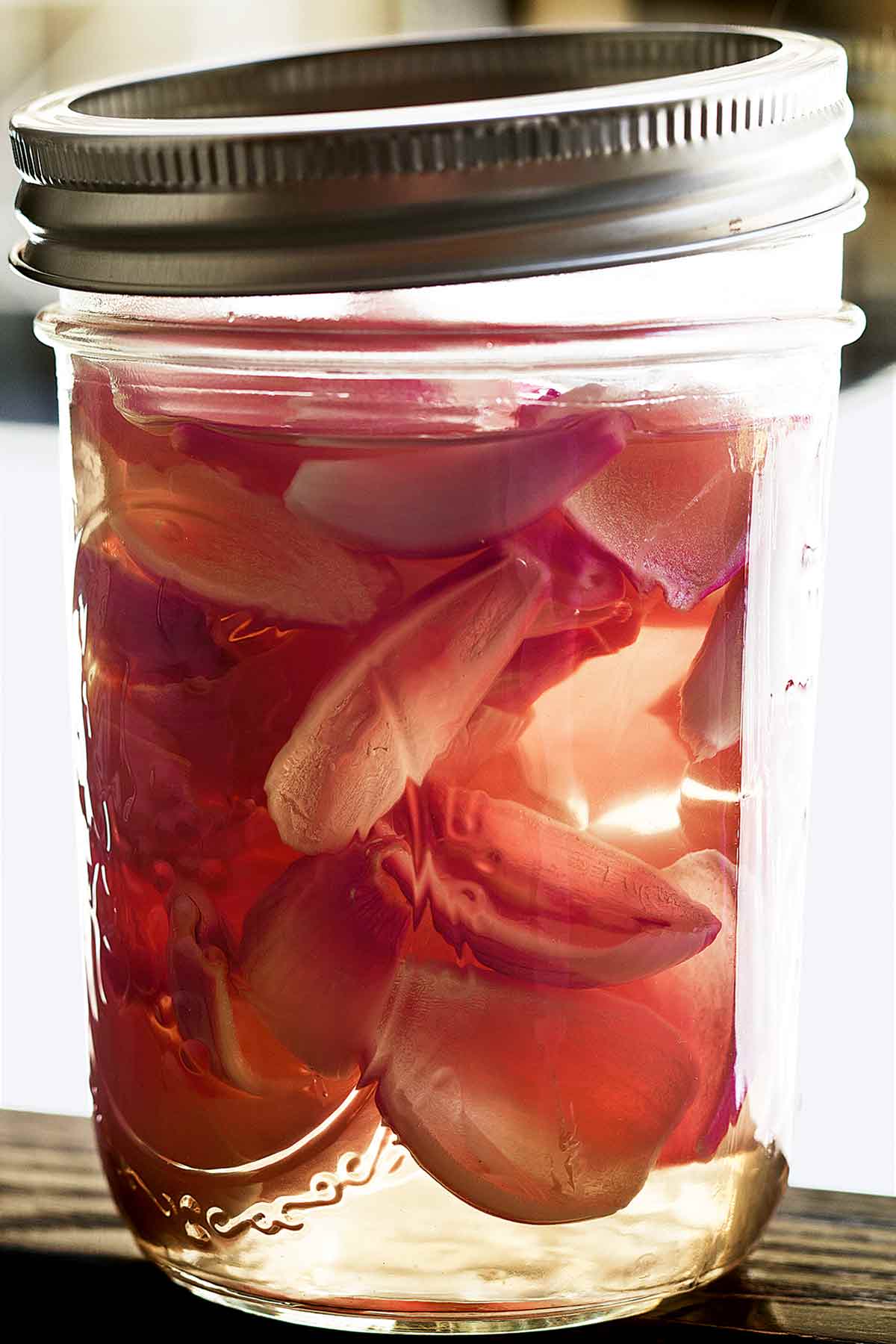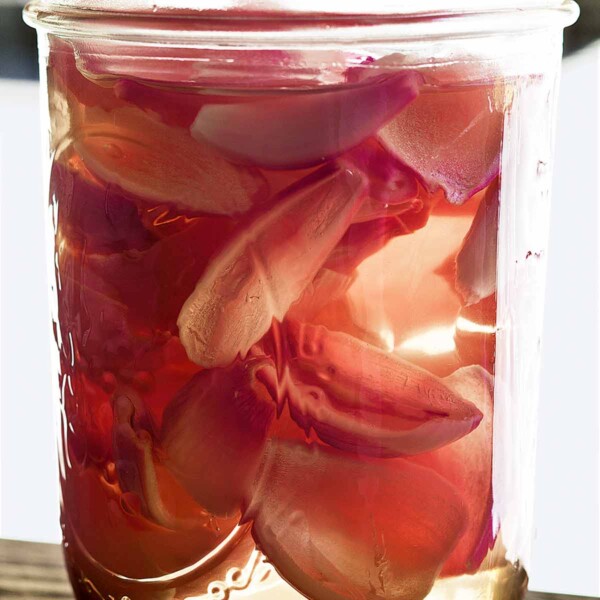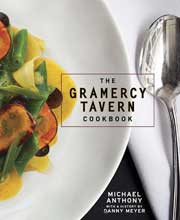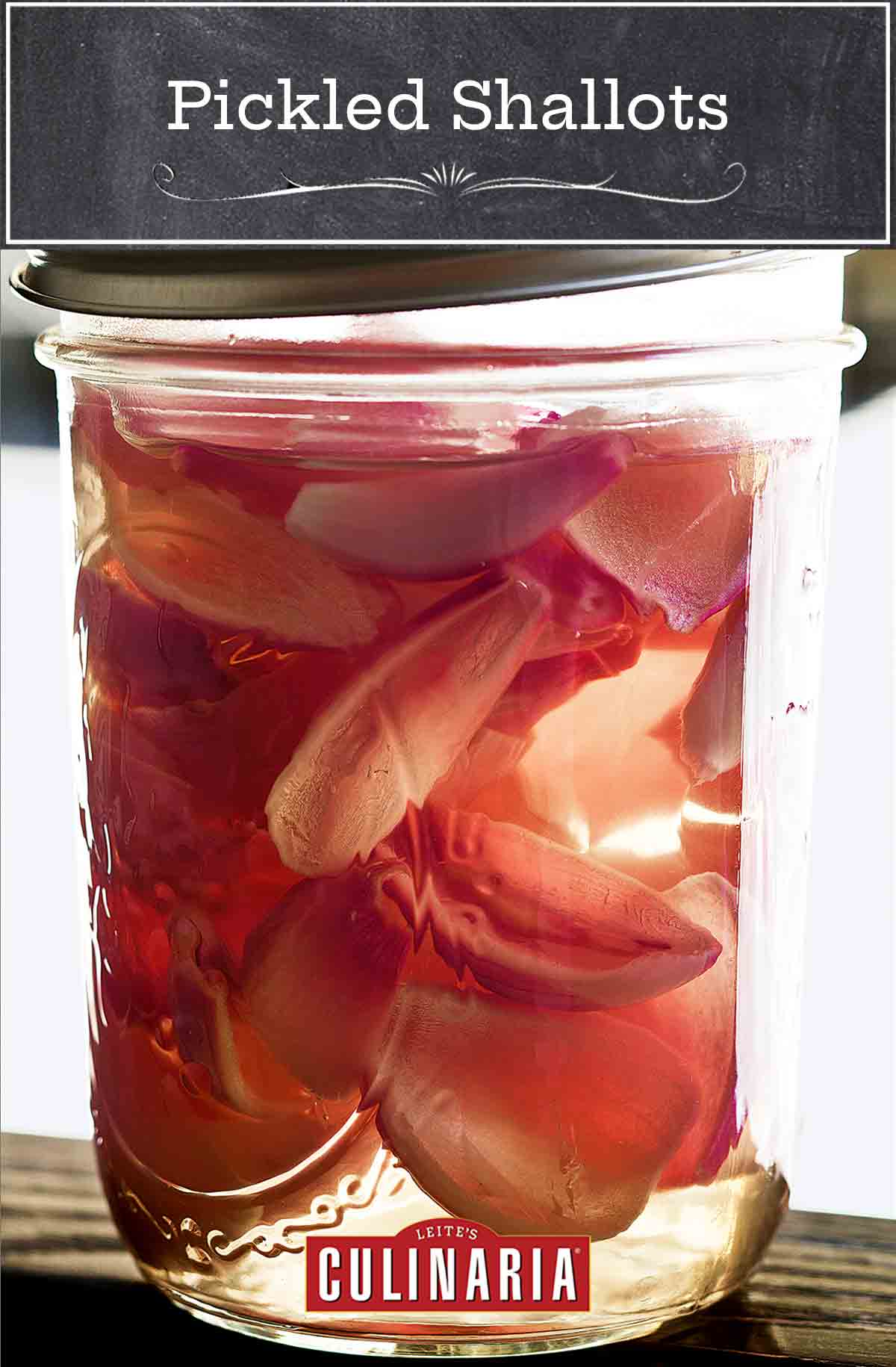
These pickled shallots are pretty instant in terms of gratification, seeing as they take just 6 hours of pickling time in your fridge, as opposed to several weeks on your pantry shelf, and your reward is unexpected bursts of acidity in all the right places—cheese plates, salads, tacos, sandwiches, burgers, omelets (we could go on but we’d much rather you let us know in a comment below how you fancy these pink lovelies).–Michael Anthony

Pickled Shallots
Ingredients
- 5 shallots
- 3/4 cup unseasoned rice vinegar*
- 1/4 cup cold water
- 1/4 cup granulated sugar
- 1 tablespoon kosher salt
Instructions
- Halve each shallot lengthwise and pull apart the layers to form petals. You should have about 2 cups. Place the shallots in a medium bowl.
- In a small saucepan, combine the vinegar, water, sugar, and salt. Bring to a boil over high heat, stirring until the sugar and salt are dissolved. Pour the pickling liquid over the shallots and cover them with a plate to keep them submerged. [Editor’s Note: The shallots may not be completely submerged, but that’s okay.] Let cool to room temperature.
- Cover the bowl (as well as the plate) with plastic wrap and refrigerate for at least 6 hours, or overnight. Transfer the pickles and liquid to a container, cover, and refrigerate for up to several weeks.
Notes
*Can I substitute white vinegar for rice wine vinegar in my pickled shallots?
In this recipe, Michael Anthony uses unseasoned rice wine vinegar because of the complexity it brings to the pickled shallots. With only 5 ingredients, rice wine vinegar bumps up the flavor of the shallots—which can be somewhat subtle. Distilled white vinegar is the go-to for pickling and can be used, but in this instance, you’ll find that your shallots will lose a lot of the nuances brought out by a more delicate-tasting vinegar.
Nutrition
Nutrition information is automatically calculated, so should only be used as an approximation.
Recipe Testers’ Reviews
I made this pickled shallots recipe a week ago and am already dangerously close to finishing them off. These are as easy and delicious as can be with 10 minutes of actual work involved. The use of unseasoned Japanese rice vinegar is key here. It has a smoothness and lack of acidic bite that brings out the flavor of the shallots perfectly, making for a sweet and subtle pickle that can be tossed into any dish.
We’ve been using them on everything. I’ve tossed them into green salads, grain salads with crunchy vegetables and feta cheese, ham and cheese omelets, melted cheese on toast, I even diced them into a bowl of warm miso soup. They’ve added just the right bit of punch to everything they’ve met. These pickles are a keeper for sure!
Vinegar lovers will enjoy this quick pickled shallots recipe, which turns the shallots a lovely pink after preserving. They provided a tangy counterpoint to harissa-spiced turkey burgers and should be a great accompaniment to any kind of pulled pork sandwich or barbecue beef sandwich. The pickles are pretty heavy on the vinegar flavor, though, so people who aren’t vinegar fans will want to keep that in mind and maybe adjust the ratios in the recipe.
Measuring 2 cups of shallot petals was a little tricky. Unless they’re nested inside each other in the measuring cup, there was a fair amount of open space in the cup due to their shape. I didn’t pack them down, and three shallots gave me 2 generous cups of petals. It may have been too many, as they rose a little above the top of the pickling liquid at first. Eventually, with a plate weighing them down as they softened, they were all submerged.












Re pickled shallots: you say “ Halve each shallot lengthwise and pull apart the layers to form petals”. Do you actually mean pull apart each “petal” from the root totally, or just “separate “ from the root and leave each half intact???
Thanks for requesting that clarification, Debbie. You’ll want to pull each petal from the root totally.
Delicious tasting, got better with age. Also added onions and garlic.
Thanks, Joe! We so appreciate you letting us know.